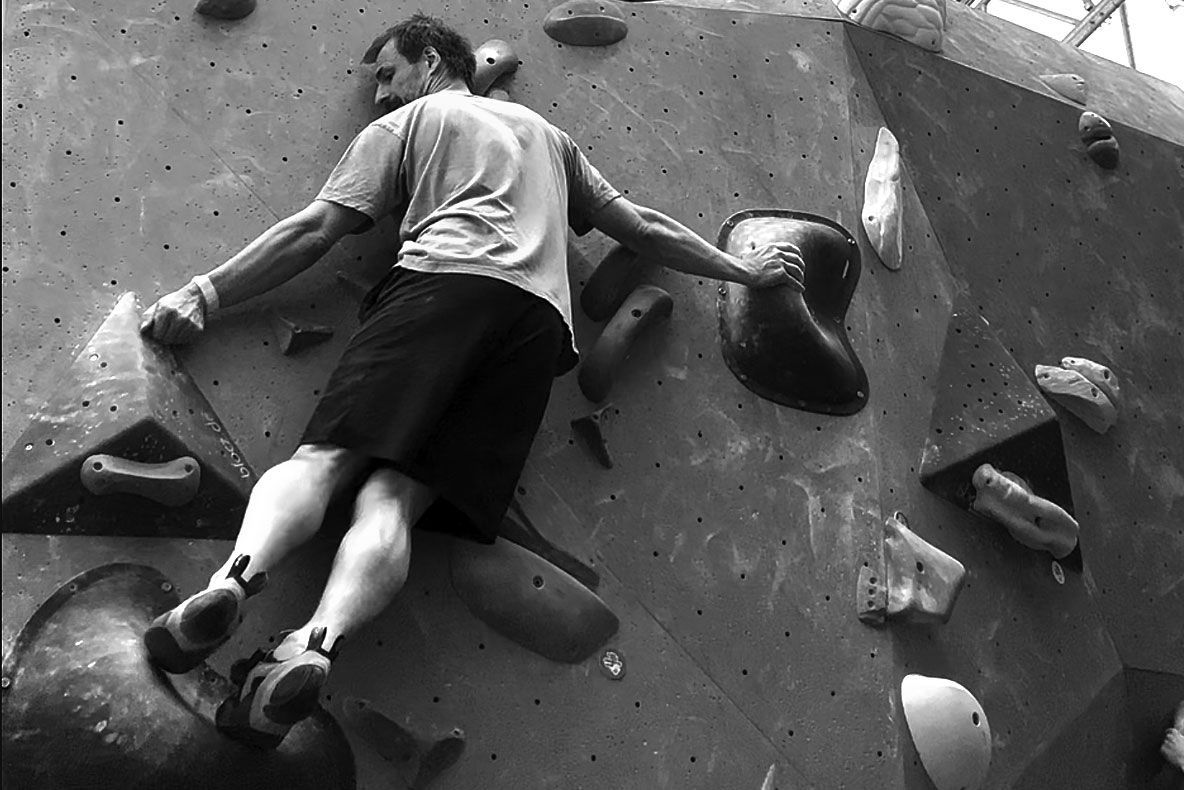
Background
This is my current and final research project for my thesis. I have been observing and studying the Route Setters, Alex Lemel and Jack Burso, at Mile End Indoor Climbing Wall and asking how can a first-person study of the embodied practice of route-setting can inform my understand of the body as a site of design practice? Can the setters skill in creating embodied problems help the field of embodied experience design solve some of their own?
Route setting is the practice of designing artificial climbing wall routes, or problems, through the placement of specific hand and foot holds that allow others to get to the top of the wall. The Route Setter must create routes of various difficultly according to a global grading standard. The practice requires a Route Setter to understand how other bodies respond to the problem they design and how different bodies inform their own subjective understanding of difficultly.
Setters can be understood to ‘take the problem on their bodies’. Testing and positioning the holds as they physically experience and test the route. Their bodies are therefore placed in two subjectivities as the setter and climber. In order to do this do they imagine the activity performed by other bodies? How does their own bodily structure influence their practice? How does one come upon the wall anew with fresh routes?
In keeping with the theme of my research, this project was conducted mainly through a series of bodily encounters within Mile End Climbing wall, where I have been a member since October 2019.
Throughout my time as a member, lead Route Setter Alex Lemel was somewhat of a mysterious figure, always walking through the various rooms with purpose, always busy, head down. As my climbing improved I became interested in my body’s relationship to the boulders. As this relationship grew I noticed re-occurring patterns. Simpler routes would introducing techniques to climbers required on more complicated boulders. The routes were preparing the bodies of the climbers for more challenging climbs.
Through the climbs, I started to know my body, its ability, its strengths and weaknesses in new ways. It occurred to me that while I had never spoken to Alex before I had a relationship with him through my frequent encounters with the problems he set. My new relationship to my body was in part mediated through his practice. I arrange a time to chat and found Alex was very enthusiastic, welcoming and keen to share his perspective on his profession.
Of particular note in our initial conversation was how Alex framed routes setting in relation to the community of Mile End. In Fundamentals of Route Setting, Louie Anderson describes the role of a Route Setter as the creators of climbs that are ‘the product that commercial climbing facilities are selling to their potential customers’ (Anderson 2014, 16). Alex, instead spoke of experiences and emotions, mirroring Designs own turn to experience in recent years. I knew then that Alex’s team would provide my research with valuable insights into my own understanding of designing with bodies and bodily experiences.
Approach
This study comprised of two day-long studies in which I observed the methods and processes Alex and his team used to set routes in different walls of the climbing centre. This was followed by two interviews with Alex and his teammate Jack. The study also includes observations and documentation of a Route Setting Taster Course at CanaryWall, another local London climbing wall.
My own practice-based response to my encounter with route setters is a proposed sound installation which takes recordings capturing the intimate bodily sounds of a group of climbers emotional experience such as breath, fingers and shoes making contact with holds and represents them in other spaces. can the emotional experience captured in the recordings add new textures in the background of anothers encounter.
Outcomes
This project is still in development and aims to be completed in Autumn 2023.
